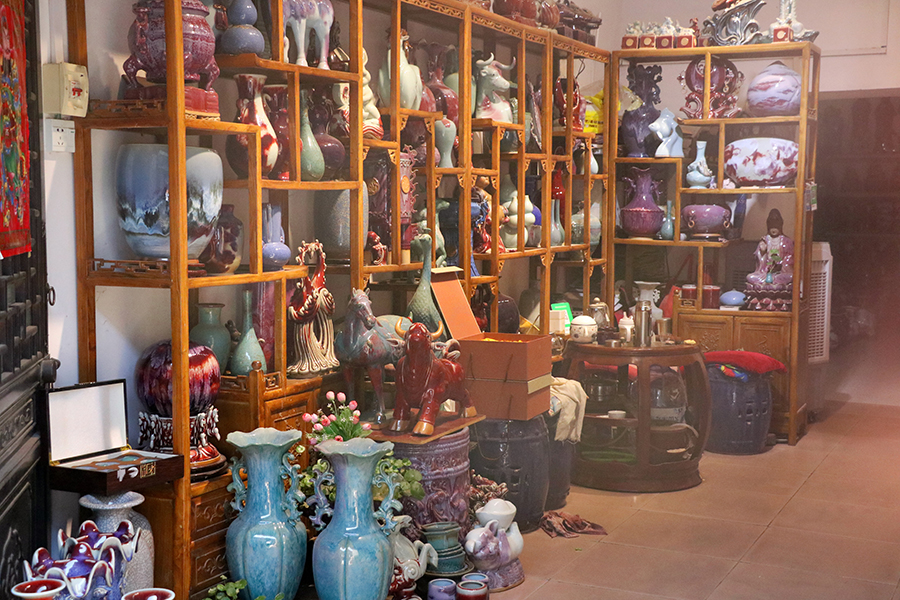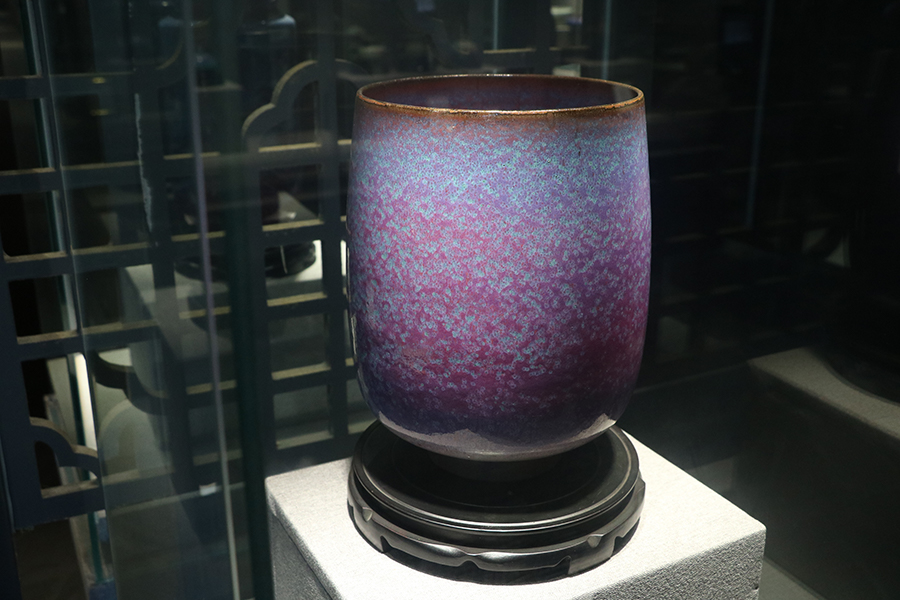Ancient Jun porcelain continues to shine

Originating in Yuzhou county, Central China's Henan province, Jun porcelain, which dates back to the Tang Dynasty (618-907), flourished during the Song Dynasty (960-1279) and has been passed down through generations through innovation and preservation, stands as one of the top five Chinese porcelains.
"Jun porcelain uses copper oxides as colorants and controls the flame during firing to achieve the successful creation of copper red glaze, which is very different from the single-toned green and white porcelains of the past," said Kong Xiangqing, a representative inheritor of the intangible cultural heritage project focusing on the technique of Jun porcelain firing.

The enigma of Jun porcelain lies in its glaze firing technique, where pottery coated with glaze is subjected to high temperatures in a wood-fired kiln. This process yields unpredictable yet mesmerizing natural color transformations influenced by kiln temperature and humidity fluctuations, resulting in a harmonious visual feast of blended hues.
Enduring for over millennia, Jun porcelain craftsmanship has transitioned from a traditional teacher-to-student inheritance model to a more socially inclusive and educational approach.

According to Liu Aiguo, Party chief of the Shenhou township, there are currently about 200 companies engaged in Jun porcelain production in the town, boasting a cadre of talented young artisans. To promote the intricate craft and products of Jun porcelain, many craftsmen have embraced the trend of online slow livestreaming, showcasing meticulous handmade and firing processes.
Today, an industrial cultural park of Jun porcelain has emerged from the site of a former State-owned porcelain factory, integrating ancient Jun porcelain culture with the modern industry. Serving as a historical showcase of Jun kiln culture and industrial progress, this cultural park has transformed into a multifaceted tourist destination encompassing dining, lodging, sightseeing, shopping and entertainment.
